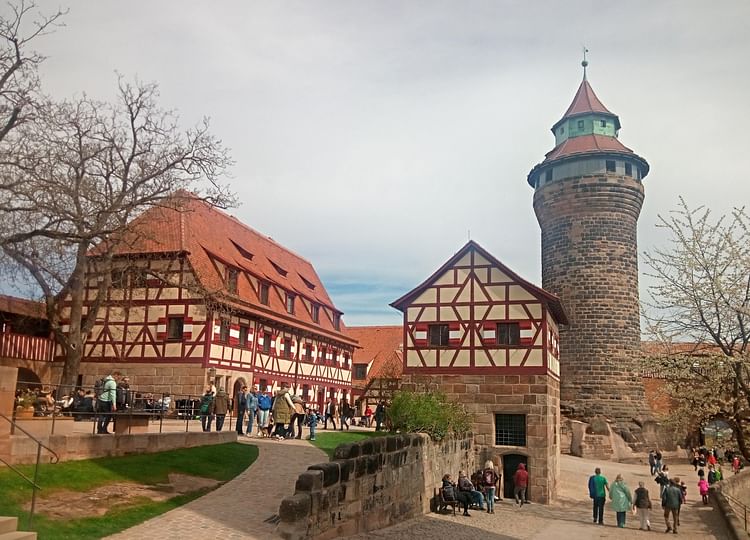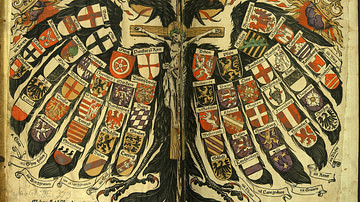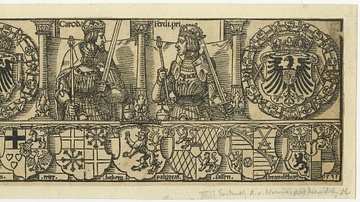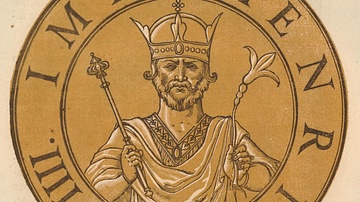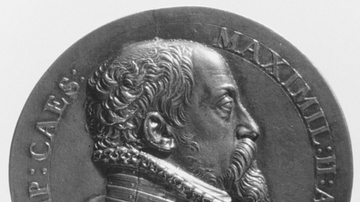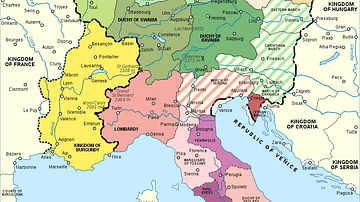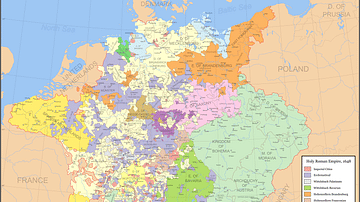Illustration
The Imperial Castle is Nuremberg's landmark, a symbol for the power and importance of the Holy Roman Empire.
Nuremberg (Nürnberg), first documented as a royal estate in 1050, was an important base for the domestic power politics during the time of the Salian and Staufer (Hohenstaufen) kings and emperors. The castle and the town formed a preferred place of residence for the travelling rulers, who held court days and imperial assemblies here.
The Staufer built an extensive palace complex on the castle rock which still characterizes the appearance of the imperial castle today. They appointed a burgrave who resided in the front area of the complex, and in 1191 the office of burgrave passed to the Counts of Zollern.
Thanks to the close connection to the kingdom and the location at the crossroads of vital commercial paths, Nuremberg quickly developed into an important centre of trade and export as well as a financial centre. The letter of Emperor Friedrich II from 1219 favoured the civil autonomy of the municipality at the expense of the burgrave's rights. The development of the independent imperial city was consolidated with the end of the Staufer dynasty in 1254.
The town finally emerged victorious from the bitter disputes with the Zoller burgraves, who acquired extensive territories in Franconia. In 1422, Emperor Sigismund gave it responsibility for the castle for the good of the king and emperor. After an attack on the castle, the city finally acquired the remains from burgrave Friedrich VI. Since that time, the entire castle complex has been owned by the city.
In the late Middle Ages, Nuremberg was considered the most distinguished town of the empire. It was the scene of numerous imperial assemblies, and from 1356 the "Golden Bull" of Emperor Charles IV stipulated that every newly elected ruler must hold his first court day in Nuremberg.
Most emperors stayed here several times: Ludwig IV the Bavarian 74 times, Charles IV 52 times. However, the castle lost its importance. The town hall, completed in 1340, replaced it as a conference venue, and from the time of Ludwig the Bavarian, the emperors preferred the living comfort of the patrician houses. In 1423, Sigismund also gave the city the imperial insignia, a sign of special trust. The Habsburg Frederick III. and his son Maximilian I. were the last emperors to reside in the castle and town for a longer period of time.
The acceptance of the Reformation in 1524 led to estrangement between the Protestant city and the Catholic emperors. After the Thirty Years' War, the Reichstag was finally moved to Regensburg in 1663. After the dissolution of the Holy Roman Empire in 1806 and the incorporation of Nuremberg into the Kingdom of Bavaria, the castle found new interest as a monument of German history. From 1833, King Ludwig I had it redesigned by the architect Carl Alexander von Heideloff in order to be able to live there as sovereign.
In 1866, the Hohenzollern seized the imperial castle: Ludwig II had to grant King Wilhelm I of Prussia joint use of the castle after the defeat in the war of 1866. Emperor Wilhelm II lived in the castle several times and called himself the "Burgrave of Nuremberg".
Cite This Work
APA Style
Manea, I. (2022, April 24). Nuremberg Castle. World History Encyclopedia. Retrieved from https://www.worldhistory.org/image/15693/nuremberg-castle/
Chicago Style
Manea, Irina-Maria. "Nuremberg Castle." World History Encyclopedia. Last modified April 24, 2022. https://www.worldhistory.org/image/15693/nuremberg-castle/.
MLA Style
Manea, Irina-Maria. "Nuremberg Castle." World History Encyclopedia. World History Encyclopedia, 24 Apr 2022. Web. 15 Apr 2024.
